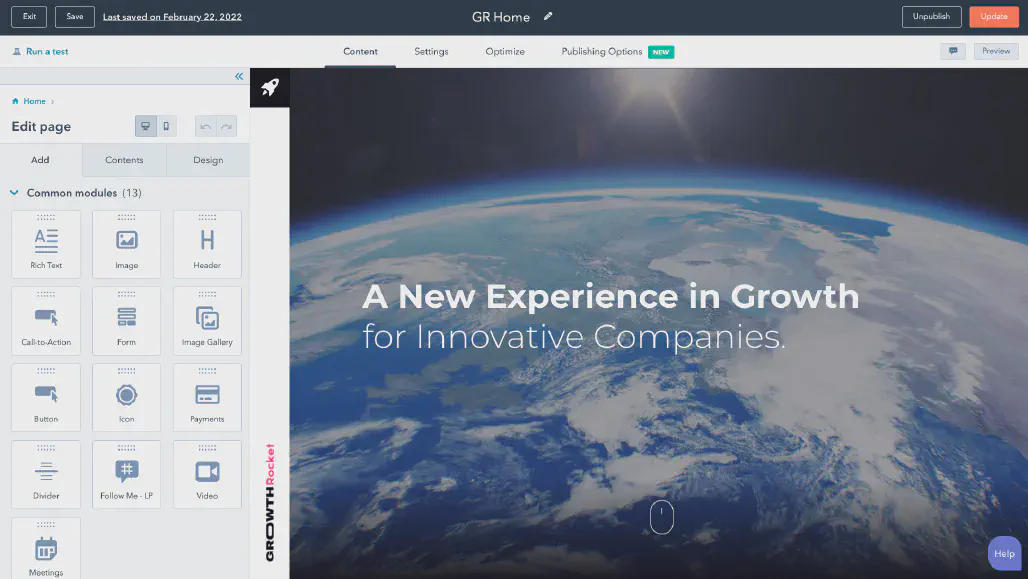
Tackling AI Bias: Identifying & Preventing Discrimination
13 Min read
Artificial intelligence (AI) has the potential to revolutionize numerous industries, but it is not without its pitfalls. …

Let's figure out
A CMS is a kind of software that facilitates the administration of digital material throughout its life cycle, from inception through distribution and beyond. The two most common applications for CMSes are ECM (enterprise content management) and WCM (w for web)
A CMS which means content management system, is a program that allows you to manage your website’s content using an intuitive interface and without having to learn how to code
Both an application for content management (CMA) content management application and a (CDA) - content distribution application make up a content management system (CMS) (CDA). So, it actually consists of two components
The Content Management System (CMS) is a graphical interface available for user that lets non-techies build, edit, and delete web pages and their associated content. Once material has been created in the CMA, it is sent to the CDA where it will undergo further processing before being sent out to the user
While a content management system (CMS), enterprise content management system (ECM), and web content management system ( WCMS) all handle content, they are not
A companion to the ECM system is the CMS. A CMS is software that may be used to produce, organize, and store digital information, and it is most effective when dealing with structured data like documents and databases
Both organized and unstructured material may be handled by an enterprise content management system. Material management systems include tools, techniques, and safeguards necessary for managing content successfully
In comparison to an enterprise content management system (ECM), a web content management system (WCMS) is designed specifically for web content, such as the urls of an online store. It’s a publishing platform that promotes teamwork in writing. With that being said, ECM can cover content not only in web but for example in mobile app
All information is indexed and searchable, and users may narrow their results by a variety of criteria, including but not limited to original publication timestamp, term or keyword, and writer.
This facilitates the conversion of old physical documents and more old digital documents into more modern file formats like HTML or PDF.
These capabilities allow for material to be revised and revised after it has been published. When using revision control, it is also possible to monitor who makes changes to a certain file.
This feature allows users to create and edit material using an approved template or group of presets, as well as wizards and other tools.
Additional benefit of a content management system is the ability to conduct targeted, personalized marketing campaigns. The term “personal marking marketing” refers to a website’s capacity to personalize its content and advertising based on information the user has provided or that the site has automatically gathered. A consumer searching for digital photography on Google, for instance, may see digital camera retailers in the sponsored links instead of supply retailers. That might be same confusing as if you were searching for trucks but got websites with kittens
URLs optimized for search engines known as SEO;
Integrated, web-based support services, including message boards;
Protection and access controls based on group membership;
Complete template compatibility and fully editable layouts;
Simple versioning and installation processes based on wizards;
A linguistically flexible admin interface;
Server load is kept to a bare minimum;
File managers that are integrated;
Since CMS systems are designed to be easy to install and use, and can be added to a CMS to extend its capabilities without the need for complex coding.
Some common types of CMS plugins include:
CMS plugins can be a useful way to add specific functionality to a website or digital platform without the need for custom coding. They are often available for free or for a small fee, and can be easily installed through the CMS’s plugin directory.
Thanks to the intuitive graphical interface, the program may be used by those with little experience with computers.
Users may simply type in their query and get a resulting list, just as on Google, thanks to the integrated search bar.
As simple as it is to add new material, it is just as simple to take old stuff down. In order to keep websites current, a CMS makes it simple to remove previously published information.
Whether a CMS is hosted in the cloud or on-premises, it still allows users to access data from any internet-connected device, regardless of location.
A content management system facilitates the administration of editorial control. A constant stream of new material. Users of a content management system may make instantaneous changes to the site’s written material without having to contact a programmer.
With a content management system, companies may expand their online presence as needed without having to hire a programmer for each new website. Modifications applied quickly and easily. It just takes a few mouse clicks for the development team to deploy new versions
If you are an educational organisations and looking for cms schools or cms calendar to integrate with your schedule this topic might be interesting for you. CMS medicare or generic cms portal are common in software world. Every business which is based on regular content publishing requires a cms website.
When debating whether or not to invest in a CMS, businesses have a virtually infinite number of considerations to make. Look for the standard features, such a user-friendly editor and powerful search options. However, the software used by a select few businesses is predicated on far more nuanced criteria.
Think about the magnitude of the enterprise and its widespread presence. The administrator of a content management system (CMS) must have an idea of the expected number of users, whether or not the CMS will need to handle several languages, and the size of the support staff necessary to keep things running smoothly. How much discretion the CMS grants its administrators and its end users is equally crucial. The variety of electronic data formats used by a company is another factor to consider. It’s important that all digital material be easily searchable.
No-code platforms are tools that allow users to create and customize digital products and services without the need for coding skills. They typically include pre-designed templates and drag-and-drop interfaces that make it easy for users to build and customize their own products.
Many no-code platforms can be integrated with a CMS (Content Management System) in order to allow users to manage and maintain their digital products and services within the CMS. This can be a convenient way for users to access all of their digital tools and content in one place, and can also streamline the process of publishing and updating content.
There are many different no-code platforms available, each with its own set of features and capabilities. Some popular no-code platforms include:
Webflow is a no-code platform that allows users to create and customize websites without writing code. It includes a range of pre-designed templates and a drag-and-drop interface for building custom sites.
Bubble is a no-code platform that allows users to build and customize web and mobile applications without writing code. It includes a range of pre-designed templates and a visual programming interface for building custom apps.
Adalo is a no-code platform that allows users to create and customize mobile applications without writing code. It includes a range of pre-designed templates and a drag-and-drop interface for building custom apps. No-code platforms can be a useful tool for businesses, organizations, and individuals who want to create and customize digital products and services without the need for specialized coding skills. Integrating a no-code platform with a CMS can make it easier to manage and maintain these products and services over time.
Many content management systems (CMSs) are available, both free and with paid subscriptions, for individual and business usage. To give you an idea of who makes the most well-known CMS, here are some examples:
This is an open-source, MVC-based CMS that may be used at no cost. Joomla is a PHP-based content management system (CMS) that includes tools like caching, RSS feeds, blog postings, search, and translation support.

This is another PHP and MySQL-powered web cms with open code. WordPress may be hosted in the cloud or installed on a company’s own server. Many different skins and WordPress plugins allow for extensive personalization of this program. You may also use it to write blogs, as it is a widely used tool for that purpose.

Technically speaking, WooCommerce is not a content management system. WooCommerce is a plugin for the WordPress content management system, thus you’ll need WordPress to use it.
As a content management system, however, W3Techs estimates that it would have 5.8% marketshare. That’s how many sites out of the total number use it. Payment processing with PayPal and Stripe is included into WooCommerce by default. Extensions and plug-ins make it possible to integrate additional payment processing options.

Another free with open code CMS option is Drupal
A lot of prestigious sites, such as The Economist and several academic institutions, are applying this content management system (CMS).
If you’re a developer or have access to a developer, Drupal is a great alternative for your website. It’s great if you want to construct a highly personalized site that processes a lot of information quickly and easily.
SiteGround is a suitable server for Drupal-based websites. Not only do they provide free installation, but they can also assist with transferring over an existing Drupal site.

This content management system (CMS) is open source and free; it is developed as part of the Drupal project and targets small and medium businesses by offering inexpensive CMS. Backdrop is an online content management system that, on its own, only provides the barest essentials, but may be expanded with the aid of the available modules.

You may choose between a freemium or premium version of this CMS. There are features like enterprise-level security, hundreds of pre-made templates to get you started, third-party connectors, and collaborative tools. Additionally, Wix offers round-the-clock assistance to its users.

An intuitive slide page builder, search engine optimization (SEO) suggestions, and website templates are just some of the commercial CMS features offered by this platform. Each CMS plan from HubSpot comes with a free account on the company’s customer relationship management (CRM) platform, making it easy to keep tabs on both clients and information in one central location.

The CMS is just a GUI that lets non-techies build, edit, and delete web pages. It allows you to manage your website’s content using an intuitive interface and without having to learn how to code. CMS functionality includes easy indexing, searching, and data retrieval. A content management system (CMS) makes it easy to add, edit and remove content from a website. CMSs can also be used to conduct targeted, personalized marketing campaigns.
Features include URLs optimized for search engines known as SEO and integrated, web-based support services. If you are looking for cms schools or cms calendar to integrate with your schedule this might be interesting for you. CMS medicare or generic cms portal are common in software world. Every business which is based on regular content publishing requires a cms website. SiteGround is a suitable server for Drupal-based websites.
Backdrop is an online content management system that, on its own, only provides the barest essentials. Wix offers features like enterprise-level security, pre-made templates, third-party connectors, and collaborative tools

13 Min read
Artificial intelligence (AI) has the potential to revolutionize numerous industries, but it is not without its pitfalls. …

12 Min read
Quantum computing and artificial intelligence (AI) are two of the most revolutionary technological domains that are …
Looking for a solid engineering expertise who can make your product live? We are ready to help you!
Get in Touch